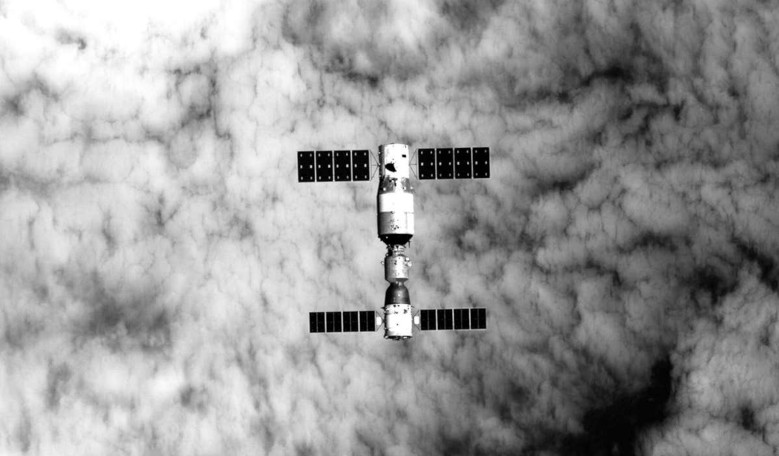Somewhere in the skies above the Pacific Ocean between New Zealand and Chile, China's space station Tiangong-2 is due to fall back to Earth any minute now, if it hasn’t already.
With a name that translates as 'heavenly palace’, this 18-metre-wide station complete with two solar panels extending from the main body, was launched from the Jiuquan space base in northwestern China on top of a Long March 2F rocket in September, 2016.
The space lab has been operational for over 1,000 days now and was home to two Chinese Taikonauts for a month as they visited the station to test tools and perform experiments.
The lab also helped China demonstrate its ability to perform its first in-space refuelling capabilities, after the country launched a robotic refuelling freighter in April 2017 to dock with Tiangong-2 and carry out a series of tests.
However the station was never intended for permanent use and now that it has fulfilled its mission, the nation’s National Space Administration said it will perform a controlled deorbit by firing its thrusters to slow its speed.
It should produce a visible streak as it falls from space, but will be easy to miss if you aren’t looking for it.
But unlike with its predecessor, Tiangong-1 which came back down to Earth unplanned and in an uncontrolled manner, it isn’t a mystery where the remains of this bus-sized station is going to fall.
Although the China National Space Administration did not specify when exactly it would be coming down, except that it would be during 19 July Beijing time, they indicated that any remaining debris not burnt up during reentry, may fall “in a safe area in the South Pacific.”
Building on the experience gained from both Tiangong precursor space labs, China are ploughing ahead with the third phase of the programme in the guise of its large modular space station. This human-tended orbiting laboratory will be roughly one-fifth the mass of the International Space Station (ISS) and about the size of the decommissioned Russian Mir space station. It is scheduled for completion around 2022.











